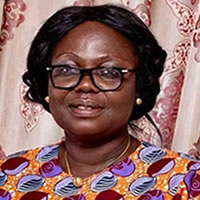Housing Conditions
The condition of Houses play important role in population dynamics. Individuals live in buildings and dwelling units within houses. Modern businesses are also conducted mostly in apartments and buildings.
Housing Stock
The Region had 331, 967 houses in 2010. The Region’s housing stock increased by more than half from 2000 to 2010. The proportionate change in housing stock was highest in 1984-2000 intercensal period (86.6%). The rate of growth of the housing stock for the periods 1984-2000 and 2000-2010 are 4.3 and 4.5 percent respectively. Thus, housing stock in the Region outstripped population for the periods 1984-2000 and 2000-2010.
Housing Stock and Household Characteristics by District
The Region had an average of 1.5 households per house in 2010. Apart from Kintampo North and Dormaa, in all other Municipalities the household per house is higher than the Regional average. Sunyani Municipality had the largest households per house (2.1). Three other Municipality, Techiman, Berekum and Wenchi had households per house higher than the regional average. Districts with the households per house higher than the regional average are Sunyani West, Asutifi and Jaman North. Kintampo South and Sene had the smallest households per house (1.1). Four other Districts including Pru and AtebubuAmantin and two Municipalities, Dormaa and Kintampo North, all had households per house below the regional average.
The Region had an average of seven persons per house. At the District level, the average number of persons per house ranges from 1.1 to 9.3. Sunyani Municipality recorded the largest number of persons per house of 9.3; Kintampo South recorded the smallest (5.9) while Jaman North District, Wenchi, Techiman and Sunyani West reported for more persons per house. The Berekum Municipality and other districts including Asutifi, Pru and Tain all recorded persons per house higher than the regional average.
Asunafo South, and Nkoranza North and South Districts together with Wenchi Municipality reported the same average household size as the regional average (4.7) while Berekum recorded the smallest average household size (4.2) and Pru had the largest (5.7). Tain, Sene and AtebubuAmantin all reported household sizes 5.2 or larger. Techiman, Sunyani Municipality, Sunyani West, Tano North and Dormaa also had household size of 4.3.
Dormaa Municipality recorded the highest proportion of the Region’s housing stock (8.5%), followed by Techiman (7.7%). Sene, Pru and Nkoranza South districts together with Asunafo North and Berekum Municipality all recorded five percent or more of the region’s housing stock. Dormaa East had the lowest share of housing stock in the Region (2.4%). Other Districts with relatively low proportions (less than 4%) are Wenchi Municipality, Dormaa East, Jaman North, Sunyani West, Tano South, Nkoranza North and Tano North.
Dwelling Types
There were more than half a million dwelling types in the Region in 2010, representing was an increase of more than 40 percent over the decade. Slightly more than half of dwelling types were compound houses (50.2%) followed by separate houses (34.6%), semi-detached, huts in the same compound and flat apartments (2.3%). Though compound houses far outnumbered all other dwelling types, it had a minimal increase of only seven percent from 2000 to 2010. On the other hand, the number of semi-detached houses increased more than three-fold, separate houses increased more than one-third and flat/apartments increased slightly less than 30 percent. However the number of huts in same compound decreased by 0.1 percentage point from 2000 to 2010.
Techiman, Dormaa, Berekum and Sunyani Municipalities reported the highest number of dwelling types while Nkoranza North, Kintampo South and Tano South districts all recorded the least number of dwelling types.
The number of compound houses in twelve Districts and Municipalities is higher than the national average of 50.6 percent. They included Jaman North, Asutifi and Jaman South where more than 60 percent of the stock of houses as compound houses. Sene, Nkoranza North, Dormaa Municipality and Nkoranza South all had the least stock of compound houses below 40 percent.
Ten Districts recorded stock of separate houses above the regional average of 34.6 percent. Sene, Dormaa and Nkoranza South recorded more than 40 percent of the separate houses in the Region. Seven Districts including Sunyani Municipality, Asutifi, Jaman South and Sunyani West also recorded less than 30 percent as the share of separate houses of the total stock of houses.
The highest proportion of semi-detached houses is 7.9 percent, the lowest proportion is 2.7 percent in Berekum, Dormaa East, Nkoranza North and Wenchi Municipality, more than seven percent of their stock of houses is the semi-detached house while in Tain, Tano South, Kintampo North, Jaman North and Sene the semi-detached house constituted less than four percent of their housing stock. The percentage of huts in same compound ranged from as high as 11 percent in Kintampo South to a low of 0.5 percent in Berekum. Districts with a high proportion of huts (6% or more) include Nkoranza North, Tain, AtebubuAmantinKintampo South, Sene, Asunafo South, Nkoranza south and Pru.Sunyani, Berekum, Sunyani West and Asunafo North reported a relatively high percentage of flat and apartments. While Kintampo South, Kintampo North and Tain had the lowest shares for flats and apartments (less than one percent).
Room Occupancy
Single room occupancy is the more predominant in the Region with more than half of households (54.1%) recording single room-occupancy. About 10 percent of households also recorded occupying four or more rooms. Single and two room occupancy recorded an increase over the decade. More urban than rural households occupied single rooms (30.1%). Berekum Municipality reported the highest single room occupancy (64.7%) while Pru recorded the lowest (34.5%). Whereas two room occupancy ranged from 31.5 percent in Sene to 18.2 percent in Berekum Municipality, three room occupancy on the other hand, ranged from 15.6 percent in Pru to 8.2 percent in Berekum Municipality.
The range for room occupancy decreases as the number of rooms increases. Pru and Senehad the highest household room occupancy. Sene reported more two rooms occupancy in the Region and more than half of households in Sene and Pru occupied two to four rooms. Households in Berekum, Sunyani West, Sunyani Municipality, Techiman and Tano North had predominantly one room occupancy. Sene and Pru recorded the least occupancy for single rooms.
Ownership of Dwelling Units
More than half of stock of dwelling units (53.1%) in the Region are owned by household members. Though this seems high the stock of dwelling units owned by household members reduced from 61.7 percent in 2000 to 53.1 percent in 2010. Dwelling units owned by relatives who are not household members and other private individuals together constituted about 42 percent of all dwelling units. Other ownership categories together accounted for less than one-fourth of dwelling unit in the Region.
Ownership by other private individuals recorded an increase of about 10 percent from 2000 to 2010. Sene recorded the highest proportion of ownership by household members (77.4%) while Sunyani Municipality recorded the lowest (30%). In addition, seven Districts including Berekum, Sunyani West, Jaman South and Wenchi Municipality all recorded less than 50 percent of dwelling units owned by relatives of household members. Six districts including Sene, Kintampo South, Pru, Nkoranza North, Tain and Atebubu Amantin also recorded more than 60 percent of dwelling units owned by household members.
Ownership by other private individuals ranged from nine percent in Sene to 45.2 percent in Sunyani Municipality while ownership by a relative not a household member also ranged from about 11 percent in Sene to about 38 percent in Jaman North. Four Districts (Sene, Pru, Kintampo South, and Asunafo South) recorded lower proportions of ownerships by relatives nor a member of the household, and where ownership was by other private individuals. Jaman South and Jaman North are districts with more than one-fourth of dwelling units owned by relatives not a household member. The of ownership of private employers ranges from 0.4 percent in Nkoranza North to 9.4 percent in Asunafo South. Asunafo North, Asunafo South and Asutifi all recorded the large stock (more than four percent) of dwelling units owned by private employers.
Tenure
Nearly half of dwelling units are occupied by owners and about half have either rented or staying rent free. “Perchers”, squatters and other occupants are not common in the Region. Owner occupancy is relatively high in rural areas. More than 60 percent of dwelling units in rural areas are occupied by owners. About one in eight dwellings are rented. Rented dwelling units (40.1%) and owner occupancy (35.2%) are predominant in urban areas.
About 24 percent of all dwelling units in the Region are occupied rent free. Owner occupancy is high in Sene (74.3%), Kintampo South (71.6%) and Nkoranza North (64.4%) compared with Sunyani, Berekum and Techiman with low owner occupancy. Free rent occupancy ranged from 40.1 percent in Jaman North to 14.1 percent in Sene. Three Districts, Jaman North, Asunafo South and Jaman South together recorded more than one-third of households living in free dwelling units.
Lighting and Cooking Facilities
Main Source of Lighting
More than half (54.3%) of the households in the Region use electricity, for lighting, 32.6 percent use flash light/torch and 11.9 percent kerosene lamp for lighting. Other sources are electricity powered by generator (0.5%) and use of candle (0.3%). The main source of lighting use by urban households is electricity from the main grid (36.7%). Urban households recorded twice as much lighting power from main line electricity supply than rural households. Main sources of lighting for rural households were flash light/torch (25.2%) and electricity from the main lines (17.1%), and kerosene lamp (8.7%).
The use of electricity is predominant in Asunafo North Municipality (49.10%) than all other areas where four in five households use main line electricity for lighting. Kintampo South recorded the lowest use of main line electricity (21.1%). Kintampo South, Pru and Sene and as Kintampo North each use less than 40 percent of main line electricity for lighting. More than half of households in Kintampo South (53.1%) used flashlight/torch compared to areas such as Jaman North (48.6%), Tain (43.1%), Asunafo North, Kintampo North Municipal (41.9%) and Kintampo South Municipality (21.5%) at Asutifi to 53.1 percent in at Kintampo South.
Main Source of Fuel for Cooking
Although the use of wood reduced by 15 percent from 75.6 percent in 2000 to 60 percent in 2010, it remains the main source of material for cooking followed by charcoal. The use of charcoal and gas also increased over the same period. For instance, the use of gas increased five folds from 1.5 percent to 7.5 percent from 2000 to 2010. Other sources of cooking apart from wood, charcoal and gas, constitute about one percent. These included electricity, kerosene, and crop residue. The use of electricity reduced from 0.6 in 2000 to 0.2 percent in 2010.
In 2010, wood constituted 43 percent of cooking fuel in the rural localities compared to 17 percent in urban areas. Charcoals constitute 20 percent of cooking fuel in urban areas but only about five percent in rural areas. A few (less than 7%) of households reported that they did not cook Four Districts, Kintampo South (81.7%), Sene (83.7%), Nkoranza North (80.8%) and Asunafo South (80.6%) reported more than 80 percent use of wood as main source of cooking fuel. The Districts with the lowest use of wood as fuel included Techiman (37.4%) and Berekum (45.3%) municipalities. Techiman (43.9%) and Kintampo North (40.9%) rely on charcoal as source of fuel, for more than forty percent of cooking fuel. Sunyani Municipality is the most prominent user of gas (33.6%) for cooking fuel. Bathing and Toilet Facilities
Date Created : 8/10/2023 12:00:00 AM




